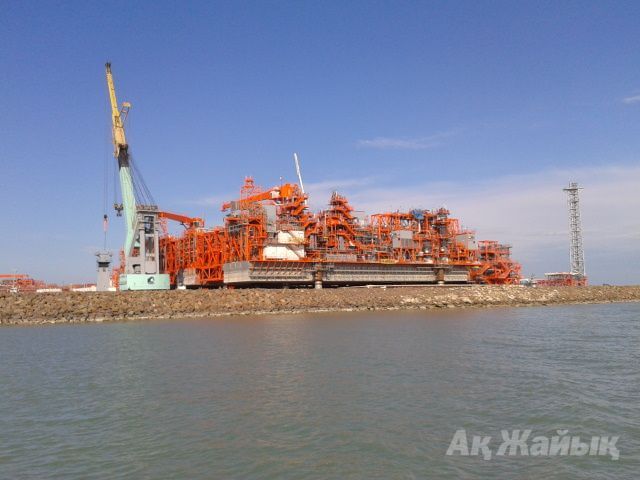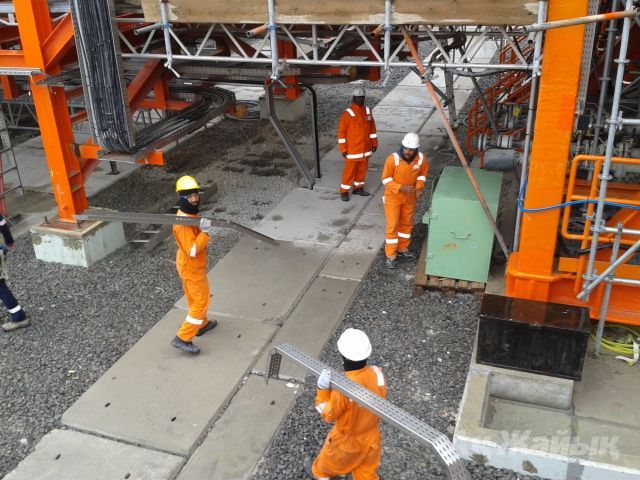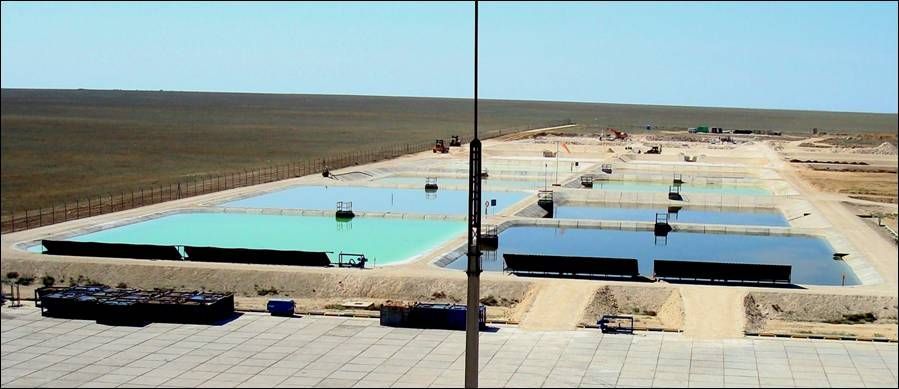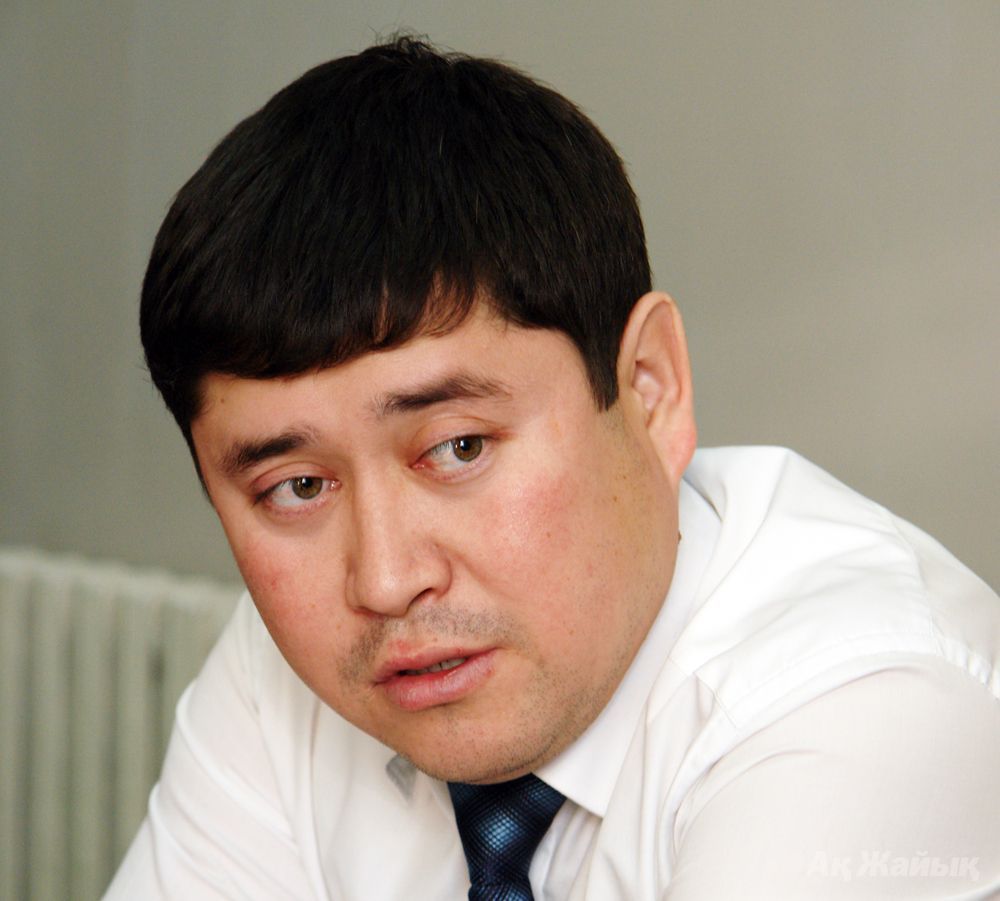 Great attention is focused at the $30bn Kashagan Project on the eve of the first oil. When is the D-Day? As it turns, the announced production date is under the threat of delay again. And this time, it is because of gross violation of Kazakh environmental regulations.
Great attention is focused at the $30bn Kashagan Project on the eve of the first oil. When is the D-Day? As it turns, the announced production date is under the threat of delay again. And this time, it is because of gross violation of Kazakh environmental regulations.
POISONOUS LAGOONS
We discovered that Agip’s Bolashak Plant which is soon to refine toxic mixture of crude hydrocarbons from the islands has no waste water cleaning and utilization facilities.
Formation waters (amounting to 75%), saturated with toxic substances, go along with oil coming out from wells. But, under the pretext of liquid process wastes, the company is intending to discharge the whole volumes to lagoons -- evaporation ponds at Karabatan Onshore Processing Facility.
Besides, Igor LUKASHOV, Agip KCO rep, stated that the waters will be sprayed in air by using special equipment in order to speed up evaporation. This means in summers all poisonous substances will easily mix with the air, and later, in the result of crystallizing and formation of saline mud, winds will be spreading them across the surrounding districts.
DELAYED INJECTION
 In 2008, Agip KCO received permit for construction of process wastes disposal field (PWDF) under the auspices of Kashagan East field development project experimental program. Initially, the project envisaged forcing formation waters back to formation. According to the expert conclusion by the RoK Environmental Ministry dd. Nov.10, 2007, Agip KCO intended to implement the system of water injection to subsurface horizons not later than 2Q 2009. Then the deadline was delayed until 4Q 2010.
In 2008, Agip KCO received permit for construction of process wastes disposal field (PWDF) under the auspices of Kashagan East field development project experimental program. Initially, the project envisaged forcing formation waters back to formation. According to the expert conclusion by the RoK Environmental Ministry dd. Nov.10, 2007, Agip KCO intended to implement the system of water injection to subsurface horizons not later than 2Q 2009. Then the deadline was delayed until 4Q 2010.
In June, this year, KazEcoProekt LLP announced the issue was at the stage of development: seismic operations and data processing were still ongoing. The most important thing: in the best scenario the project of waste waters injection will be over after 2-3 years. To recall, Kashagan oil is expected to flow in March, next year.
SUCCESSFUL TRICK
In 2011, under the guise of adjustment, Agip KCO tried to grant PWDF the status of hazardous wastes storage point to use it for liquid process wastes storage with subsequent possibility of their injection to subsurface horizons.
Environmental Regulation and Control Committee rejected this proposal. Its conclusion says formation waters should not be discharged to evaporation ponds and high H2S content water should be treated and kept in hermetic reservoirs. However, nothing of this kind is in place at Bolashak. During a media tour to Karabatan, Project Manager Luca Mori to the question about utilization of petroliferous water pointed his finger at one unit. Allegedly, the unit cleans discharge water which is then pumped to evaporation ponds. Note that he was speaking of the plant’s discharge waters, not formation waters.
 Lagoons in Mangistau OblastAnother thing to mention is the lack of water recycling system at the plant. According to the project, out of 16,849 m3 of daily water consumption, 15,429m3 are used for PWDF. Annual water consumption makes 2.6mln m3 which then goes to lagoons after a single use. Although, previously Agip intended to repeatedly use over 70% of received water.
Lagoons in Mangistau OblastAnother thing to mention is the lack of water recycling system at the plant. According to the project, out of 16,849 m3 of daily water consumption, 15,429m3 are used for PWDF. Annual water consumption makes 2.6mln m3 which then goes to lagoons after a single use. Although, previously Agip intended to repeatedly use over 70% of received water.
Given this, Kazakhstan’s Water Code provides a clear requirement: industrial organizations are obliged to have circulated water supply.
Besides, concentration of hazardous materials in Bolashak’s discharge waters exceeds maximum permissible limits as follows: suspended matters – 17 times, mineralization –13 times, methanol – 815 times, H2S – 1366 times and oil products – 34 times.
Of course, the company didn’t even think about research of potential environmental consequences from discharge of toxic waters to lagoons as well as potential risk for local people.
AT LAST, MINISTRY SAYS NO
Based on the above facts, Atyrau Oblast Environmental Department rejected the draft of maximum permissible limits for Bolashak’s PWDF for 2012-2014.
 Yerbol KUANOV, (on the photo) the Department Director, confirmed this fact.
Yerbol KUANOV, (on the photo) the Department Director, confirmed this fact.
- How come that we learnt about such serious violations just before the start up of the giant project? Why the company, being well aware of the consequences, still hasn’t started to construct water cleaning and storage facilities? There are environmental technologies that allow effective cleaning of discharge and formation waters.
- Because nobody required this. When I discovered these violations, upon the minister’s instruction I initiated formation of Expert Council under the Environmental Department, which reviewed the company’s draft and issued a negative resolution.
- What should Agip do now to make it until the start of oil production?
- Within the shortest time, they plan to build cleaning facilities: both modular and static, that will comply with all international requirements in this industry.
by Laura SULEIMENOVA
October 17 2012, 20:18
 В Атырау
-3
В Атырау
-3